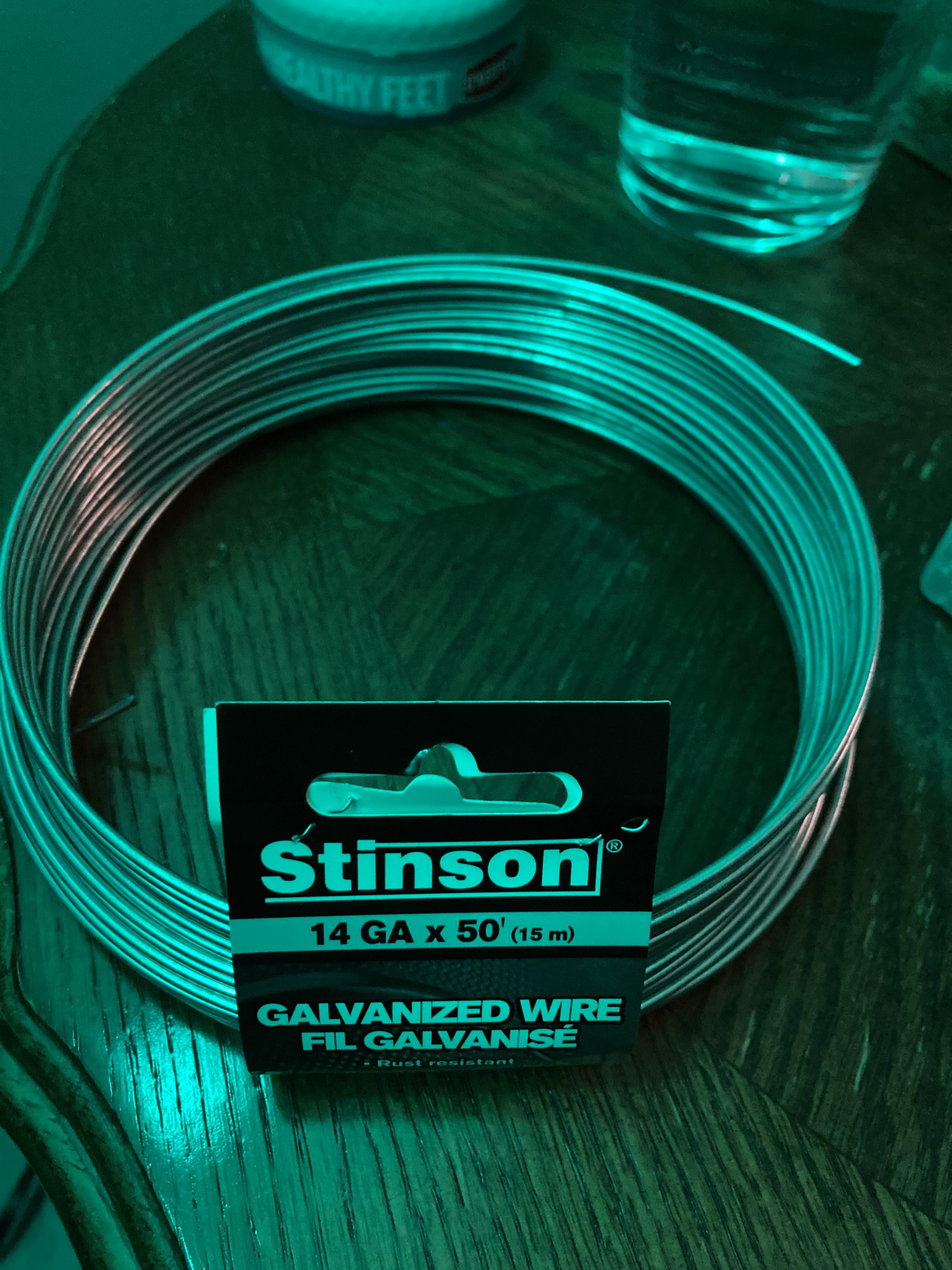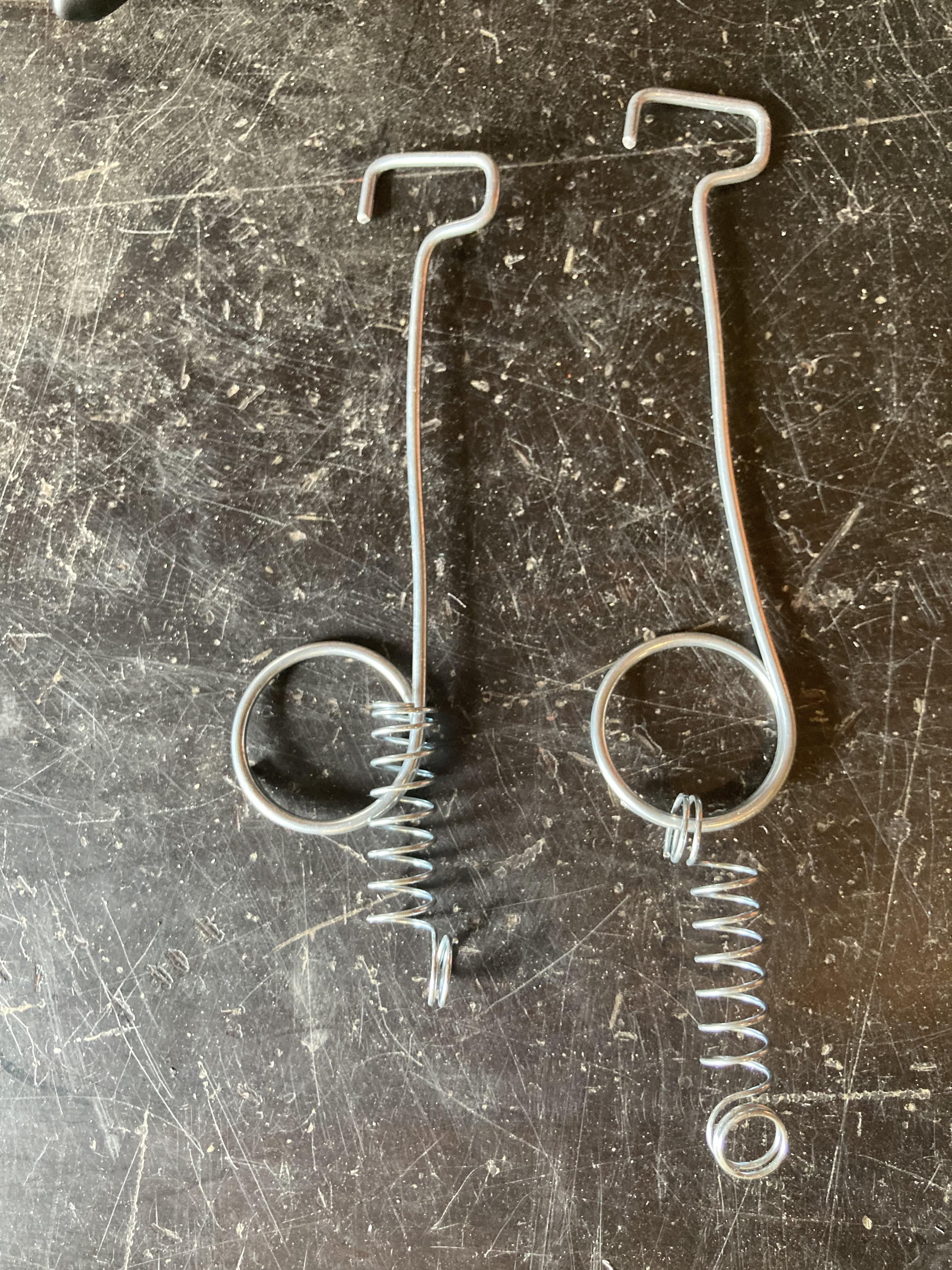Cage Latch for Wire Cage or Kennel
by Prairiefire in Living > Pets
1269 Views, 2 Favorites, 0 Comments
Cage Latch for Wire Cage or Kennel

Recently decided to make some homemade wire cages for keeping rabbits. However, cage latches seem to be either an overpriced commodity or require international delivery. Plus one is restricted to certain sizes or styles which may or may not work sufficiently. However, a custom-made latch can be made easily, adapted for length, strength (different diameter wire to start), or features (how it latches and/or attaches)... plus all at a fraction of the cost!
Supplies
- Wire, galvanized (in my case, I chose 14 gauge as it offered a good balance of strength AND formability)
- Measuring tape
- Wire cutter
- Two pliers (although one and a bench vise could be used)
- 1" pipe (or some sort of cylindrical form) -- size chosen because it's easy to fit a finger through!
- Bench vise (not necessary but easier)
- Spring
- Rotary Tool (sandpaper could work)
- Safety glasses
Cut Wire to Desired Length

- Use a measuring tape and wire cutters to cut a length of wire off the spool.
- After testing multiple lengths, I settled on nine inches. The length is needed in order to allow forming of the loop (in a later step) to go around enough to prevent the spring from easily slipping off the loop.
Remove Sharp Edges
*Be sure to wear properly fitting safety glasses, as grinding wire in this step will produce hot, sharp, & really tiny pieces of flying metal that can get into one's eyes and cause discomfort (at the least) and/or up-to the loss of vision (or worse).
- Using the rotary tool with a grinding stone, remove the jagged and sharp edges off both ends of the wire. Start by flattening each end to a ninety-degree angle.
- Then, slowly roll the wire between your thumb and forefinger, at about a forty-five-degree angle, so that each end is taken from a rough/sharp ninety-degree edge to a smooth-rolled curve.
- Give the wire a moment to cool, and run a finger over the ends to ensure they are smooth and not jagged or sharp.
- Repeated grinding as necessary until the desired smoothness is achieved.
Form the Finger Loop


- In this step, a bench vise was used to lightly clamp a one-inch diameter pipe (recovered from an old screen door retractable screen) to prevent it from moving.
- Using a pair of pliers, place a small amount of one end of the wire between the pipe and the pliers (right near the edge of the pliers), holding the wire firmly, as pictured.
- Using your free hand, and starting beside the pliers (where clamped to the pipe), slowly wrap the wire around the pipe. Ideally, wrap the wire around the pipe roughly one and a half times (or more).
Alternatively, one could use a pair of pliers to hold the pipe in one hand, while simultaneously placing the wire between the pipe and the pliers, and proceeding with forming the loop (as above).
Form Bends That Will Catch on Cage

- See picture for reference of four bends.
- Use one pair of pliers to hold wire steady while using another pair of pliers to create a ninety-degree bend (opposite of the finger loop*) after a little under a half-inch length.
- Note: One can start with first bend in reverse (not up/same direction as finger loop but instead down) to end up with a finished catch that latches under the line of the finger loop versus over it. This slight modification can result in latch being easier to open/use.
- Create a second bend, slightly less than ninety degrees, after an approximate length of more than half an inch (but less than one inch). This extra length is required in order to allow the first bend to more easily pass through, and catch on, the wire cage mesh (especially if it is only half-inch mesh). It can be adjusted as required.
- The third ninety-degree bend should be after a half-inch length.
- An opposite ninety-degree bend (from the first three bends) should be made after a half-inch length.
Bend Spring and Combine With Wire



Years back I purchased a bag of various-sized springs for half price at Princess Auto (Canada's equivalent of the United State's Harbour Freight). And, with this project, I found another use for some of them!
Select a few with the size, length, and flexibility desired, and use two pairs of pliers to bend the end(s) of each spring. One pair of pliers should grip a single spot on the spring a few coils down. The second pair of pliers should be spaced ever so slightly apart from the first pair so that a ninety-degree bend can be created.
A second ninety-degree bend can be done at the opposite end of the spring (recommend offsetting it from the first bend though, to allow for smoother hanging/operation of the catch). However, the spring had a better tendency to remain attached to the wire using only one bend (by inserting the wire partially through the spring versus only through the second bend as pictured)--although with the two bends, the spring can stretch further... so select which works better for your set up!

Put it to use!